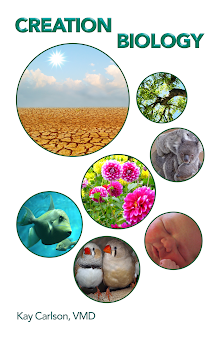A full text research paper is available online by Guo, Choe and Loeb, “Protein Tolerance to Random Amino Acid Change.” PNAS 101, 25 (June 22, 2004): 9205-9210. PNAS, the publisher, stands for Proceedings of the National Academy of Sciences of the USA. The researchers wanted
to know the probability that a protein would lose its function with one random
amino acid replacement at any (also random) position on the protein. Amino acids are the sub-units that make up proteins. The researchers
reported on their own experiments and also compared their results to others of
a similar nature.
Their own
experiment was carried out on a human protein nicknamed AAG. Its chemical name and biological activity are
described in the paper. They found that the probability it would lose its
function with only one amino acid replacement was around 34%, and the reviews of other
experiments at the time showed similar outcomes. One of several interesting
aspects of the paper concerned “indel” mutations. Indels are where several DNA bases are
inserted or deleted instead of a single base change in a gene which is copied to make the protein. They translate into extra or deleted amino acids. These indels were not even considered in the
numbers for calculation because, although they were present in low percentages, “they
invariably produce protein inactivation” (p. 9206 on the PDF version). Later the authors modify the
description to non-3bp (base pair) indels, but still give a value of “≈1” (almost equal to
one) to represent almost 100% indel destruction of proteins.
Guo's experiment was on a single protein, and other research may show that not all indels lead to total destruction of proteins. However, it is very likely that a lot of destruction from indels would be taking place in an organism before any indel would bring about innovations to form a new functional protein. Guo et al.
also quoted other experiments in which researchers replaced amino acids until
100% of the particular protein was inactivated.
The figures ranged from 5-16% of replacements to do the job.
One of the citations used in the research paper above was for work done by Douglas Axe. Axe
earned his PhD at Caltech and went on to post-graduate work at Cambridge. He is
now director of the Biologic Institute in Washington State where he does
experiments on proteins and protein systems. The Institute publishes the BIO-Complexity
Journal (link for Archives HERE). He has had articles published in the Journal
of Molecular Biology and other peer-reviewed scientific journals, contrary to
the widespread claim that Intelligent Design advocates have never accomplished
this feat.
 A paper well worth reading is Douglas Axe, “The Case Against a Darwinian Origin of Protein Folds,” BIO-Complexity (2010). You can read the abstract at the link above and the site has a
link to the PDF article. There are pictures of proteins and their
sub-units (such as the image to the left) and Axe explains why the makeup of proteins is specialized. These are not conglomerations of simple
repeating units that fall together in a warm pool. The sub-units, called amino
acids, are structured intricately and when put together in various ways have
biologically important and specific functions. Although Axe uses large words
and numbers, he also tries to explain what he says in simpler terms.
A paper well worth reading is Douglas Axe, “The Case Against a Darwinian Origin of Protein Folds,” BIO-Complexity (2010). You can read the abstract at the link above and the site has a
link to the PDF article. There are pictures of proteins and their
sub-units (such as the image to the left) and Axe explains why the makeup of proteins is specialized. These are not conglomerations of simple
repeating units that fall together in a warm pool. The sub-units, called amino
acids, are structured intricately and when put together in various ways have
biologically important and specific functions. Although Axe uses large words
and numbers, he also tries to explain what he says in simpler terms.
The challenge
for evolutionary theory concerning the origin and development of proteins is what Douglas Axe
describes as “The Sampling Problem.” Many people do not recognize the vast
combinations even small collections of molecules can make. As Axe says, “Amino Acid chains a mere 12
residues long [composed of 20 possible kinds of amino acids] …can be built in 4
quadrillion ways (20^12=4x10^15).” A relatively short protein of 69 amino acids
has about 10^90 combinations. 10^90 is the estimated number of particles in the known
universe. These numbers are not to be
brushed off. It takes reproduction of
generations of organisms to try out ("sample") new amino acid combinations, and that takes time.
Billions of years are not even close to being enough.










